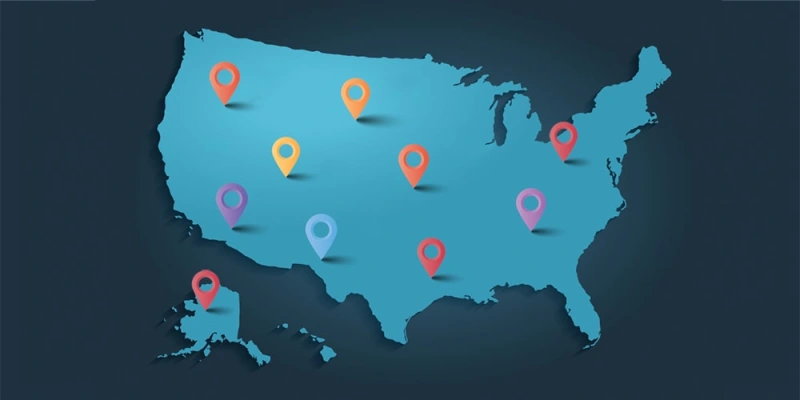Alternative medicine has been considered by some to be the “black sheep” of the medicine family since medicine’s inception, even though it was the seed from which allopathic medicine has grown. But in our zeal to legitimize medical treatment and the industry's rigid acceptance of scientific principle as the only medical standard, have we thrown out the good with the bad?
My grandmother was raised by her grandmother, who was considered the “shawoman” of the small rural town she lived in in Louisiana. At that time, medical centers were segregated and the folks who lived on farms in the Black community needed a medical alternative for treatment of the injured, sick, and dying.
My grandmother would tell me stories her grandmother told her, of getting on her horse in the wee hours of the morning to assist in a childbirth, or help with a sick child or adult. Often they did not have conventional medication or medical treatment as it was cost prohibitive, and many could not afford general treatment measures. This reality was compounded by a general mistrust of conventional medicine by the Black community, which, at the time, had been exploited and generally ignored when it came to standardized medicine. Sometimes only conventional medicine would do, but most other times they used time-tested alternative methods for treatment. Some of the treatments I remember were honey for cough, ginger for nausea, lime for headaches, peppermint tea and gentle massage for stomach ache and indigestion, boiled banana peel tea for sleep, lemon and honey tea for sore throat, molasses for constipation, liniment oil rubs for sore and aching muscles, and Epsom salt foot soaks for sore and aching feet.
Along with her community treatment duties, it was my great-great-grandmother (henceforth G2 grandmother), who would determine when and if a child was capable of attending school. Children who could not meet the cognitive rigors of school were needed on the farm. My G2 grandmother would determine a child ready for school when they could, with only verbal instruction, reach their right arm over their head to grasp their left ear. If the child in question could not follow her direction, was not attentive enough, or physically could not do it, they would be asked to try again later, or told they were needed elsewhere and could not be spared for school. I had always been intrigued by this test for school. Looking into it further, I found that a child’s forearm length, and mental development was typically adept enough to perform this task around age 5 or 6. So it made sense, to send the children who could sit still, follow directions, and understand verbal instruction, to school.
Many of these remedies and practices are still in use today, handed down from our parents and grandparents. Some alternative treatments have even made their way into allopathic medicine. I am thinking of chiropractic care, biofeedback, and massage therapy, which are now commonly used in injury treatment and management. Some of these methods are considered conventional treatment in Washington State Labor and Industry standards. Many therapists use the concepts of biofeedback, breathing modification, and visualization in their therapy treatments. Sea-bands, a bracelet with a bead that provides compression at a pressure point on the inside of the wrist, became popular among pregnant women and seafaring travelers as a remedy for nausea. I have used breathing exercises to reduce elevated blood pressures in some of my patients who are seeking their Commercial Driving Certification. It is not effective for true hypertension, but it is very helpful for nervous blood pressure elevations.
Of course, not all alternative methods and treatments are productive, or even helpful. There is no shortage of medical charlatans who have exploited the fears of others to sell them concoctions that at the very least have drained their wallets. This disturbing trend has gotten much worse over the last few years, where so many people have begun to mistrust the medical profession and the concepts that it espouses. They have turned to alternative and holistic medicine, which, while it has its merits, is not as regulated as allopathic medicine, and leaves a lot of room for misinterpretation and misunderstanding by its proponents and those who use it.
The emergence of the internet has done much to further the cause of harmful alternative medicine trends and fads. I have had more than a few patients come in after trying alternative medical methods that have failed them or who have had bad reactions from the compounds or nutrients they have taken. This is why I have decided to familiarize myself with some of the medical alternatives that are being used so that I know what to expect and how to best counsel those patients who have questions or problems after using these methods. It is also very important to find out any safety issues with medication combinations and with toxicity.
For example, there are three common treatments I have found to be useful to know about. The first, echinacea, from the daisy family, has demonstrated similar efficacy to oseltamivir in the early treatment of people with influenza. A randomized, double-blind study compared the use of echinacea against the use of oseltamivir in 473 patients with virologically confirmed influenza. Echinacea was found to be equally as effective in early treatment with fewer complications and adverse effects. However, serious interactions have been reported in patients who were taking inhaled beclomethasone and echinacea. Moderate and minor interactions have been associated with a wide variety of other medications. Common side effects include diarrhea, abdominal pain, dizziness, nausea, vomiting, and sore throat.
Another popular supplement, ginseng, is frequently used for cognitive function, stamina, and immune response. But data extraction of safety, pharmacodynamic, and pharmacokinetic information from selected literature about ginseng has shown a concern for bleeding complications.
Finally, valerian has gained popularity as a sleep aid. Anecdotal evidence exists that valerian’s sedating properties are beneficial for insomnia and anxiety, though it may have serious complications with benzodiazepines and when used in combination with alcohol.
These are only a few examples of some of the more common supplements I have seen on my patient’s medication lists. Perform your own research if there is a supplement that your patients have been using or have questions about. My advice is to avoid using in excess, and to go with a reputable brand and stick with that brand to avoid impurities or potency variations. If the patient is on medications for other conditions, I investigate specifically for interactions and any dangers to using it in combination with their current medications.
If done thoughtfully, there is much to be learned in investigating alternative practices. Who knows what will be acceptable medically in the next 10 to 20 years?
What home remedies of value have you encountered? Share in the comments.
Arlene Dorrough has been a practicing PA for more than 15 years. She is currently working in occupational medicine and urgent care. She is also working as a Medical Examiner for the DOT. Arlene is a 2021–2022 Doximity Op-Med Fellow.
Image by S-S-S / GettyImages






